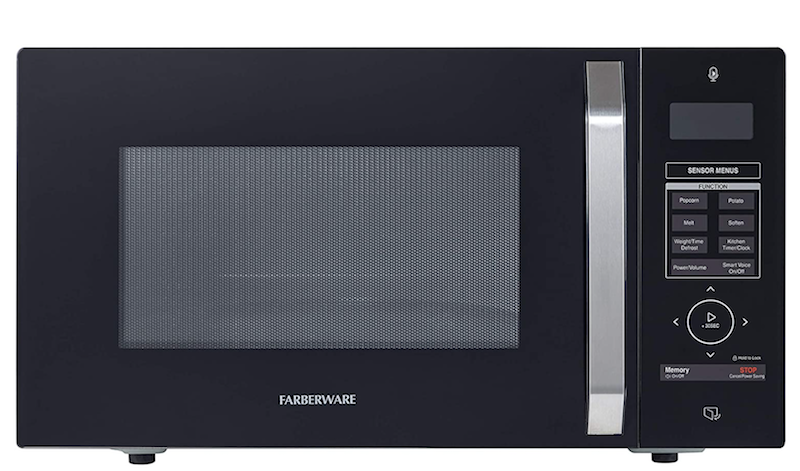Sensory is providing everyday consumer brands with the opportunity to integrate a “private voice user interface” featuring the benefits of a voice assistant without the compromises of privacy. The new voice-enabled Farberware microwave the latest product to offer Sensory voice control.
The Farberware FM11VABK microwave oven, which is available in the U.S. market today, utilizes Sensory’s TrulyHandsfree and TrulyNatural technologies, which provide control via voice commands, without the need to connect to the cloud.
Check Out: What is the Most Popular Use Case for Voice Control
Todd Mozer, CEO at Santa Clara, CA-based Sensory, believes that his company’s technology signals a turning point for voice UI technology. “People love the convenience of mainstream voice assistants, but privacy, accuracy, complicated setup, and connectivity issues continue to be a growing concern among users,” he said. “These concerns have intensified the need for custom private voice assistants. Sensory’s customer base used to be driven by companies like Amazon, Google, Microsoft, and Samsung that licensed Sensory technology to improve their general assistant offerings. Today we’re seeing a major shift, with most of our customers being brands that want to own and manage their own private custom voice assistant platforms.”
AI Voices
A recent study by Voicebot.ai said that custom voice assistants are the biggest AI trend in 2021. Overall, custom voice assistants are designed for specific functions. Creating them to be better, or outperform, general-purpose assistants like Google, Alexa, and Siri, however, is a tough job, especially when it comes to quality of experience.
Sensory’s solution is to place their tech 100 percent on the device, keeping voice data private with no data collection for the product and no recordings sent to the cloud. This aspect also makes the product cheaper due to no added cost for cloud connection.
Sensory in the New Farberware Microwave
With Sensory’s domain-specific technology, customers can easily set up the appliance. No Wi-Fi, no apps, no third-party hardware, and no cloud-connected assistant are needed. Simply do it the old way and just plug the microwave in, and it is ready to understand numerous voice commands. Customers can say “open door,” “defrost,” or “reheat for four minutes and 25 seconds.”
The microwave’s vocabulary “recognizer” is large and comes with a custom statistical language model, and NLU can support complex actions like, “Cook three baked potatoes.”
The Sensory NLU engine looks for “intents” in a limited domain; the chance of being misunderstood lessens compared to other assistants, according to Sensory. Comparatively, when the Farberware microwave was tested against the Microwave with Alexa by Vocalize.ai, the Farberware microwave understood 68 percent more spoken commands.
Patrice Samuels, senior analyst at Parks Associates said that smart appliance adoption is growing among U.S. broadband households and that smart microwaves are a leading category. “Thirteen percent of U.S. broadband households now own a smart appliance,” he said. “Voice control is a highly-valued feature for smart appliance owners, with more than one-fifth of those who own or intend to purchase various smart appliances rating voice control as one of the most appealing features of the appliance.”
This news from Sensory expands their recent announcement, as well. The VoiceHub platform is a powerful private voice assistant supporting many languages in just a few minutes. VoiceHub is a free-to-use set of web tools that give brands the power to create custom wake words.








